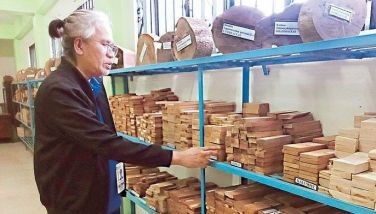DOH alarmed over increasing number of HIV cases
MANILA, Philippines - The number of HIV (Human Immunodeficiency Virus) cases in the Philippines has continued to increase over the past two years, alarming the Department of Health (DOH).
“The threat is real. An individual is like a walking time bomb that may explode and spread the virus to others, causing death especially if he or she doesn’t know his or her HIV status while engaging in high risk behavior,” said Health Secretary Francisco Duque III.
Duque said that while the number of new HIV infections worldwide had gone down by 17 percent since 2001, the number of new cases in the Philippine continues to increase.
The 2009 Integrated HIV Behavioral and Serological Surveillance (IHBSS) conducted by the DOH showed that the overall prevalence of cases in the most-at-risk population is 530 per 100,000 population.
“The figures are far higher than the 2007 IHBSS,” Duque said.
In the 2007 IHBSS, the overall prevalence rate was 99 per 100,000 population.
The survey revealed a significant rise in the prevalence rate of HIV among men having sex with men.
This year, the rate is 1,050 but in 2007, it was only 280.
The rates for freelance sex workers in 2007 and 2009 were pegged at 44 and 540; for registered female sex workers at 68 and 230; and injecting drug users at 130 and 210.
“The number of infected persons in the Philippines is growing and the infection is spreading fast in most-at-risk populations such as freelance female sex workers, men having sex with men, and injecting drug users, among others. We have to stop the spread and gain control of the situation,” Duque said.
The health chief claimed that although HIV/AIDS does not discriminate and anyone, including unborn babies, could get infected, “we have groups that are more at risk than others because of behavior that includes unprotected vaginal and anal sex, multiple sex partners and re-use of needles and syringes while injecting drugs, to name some.”
To reverse the trend, the DOH is determined to boost its information drive and strengthen its prevention programs and services against HIV/AIDS.
“But the efforts of DOH alone are not enough. The DOH will need the help of other sectors, other agencies of government, the LGUs, and individuals and communities. All of us have a responsibility and role in stopping this disease,” he added.
DOH records showed that as of October, 80 new HIV cases were confirmed by the Sexually Transmitted Diseases/AIDS Cooperative Central Laboratory, bringing the total number of cases for the year to 626.
The number of new cases is 36 percent higher than the 59 cases registered during the same period in 2008.
From 1984, a total of 4,218 HIV cases have been recorded, 828 of them have progressed into AIDS and 314 victims have died.
The most common mode of transmission was sexual contact, accounting for 3,798 cases, while the least common was through mother-to-child transmission, accounting for 49 cases.
- Latest
- Trending




























